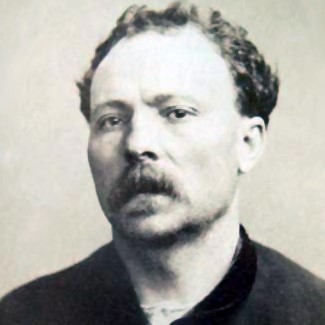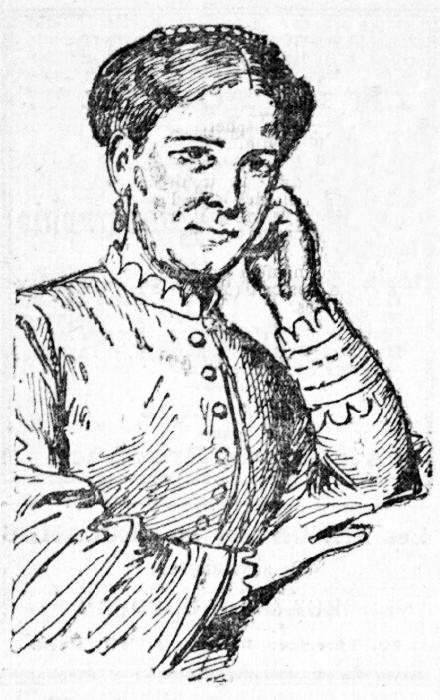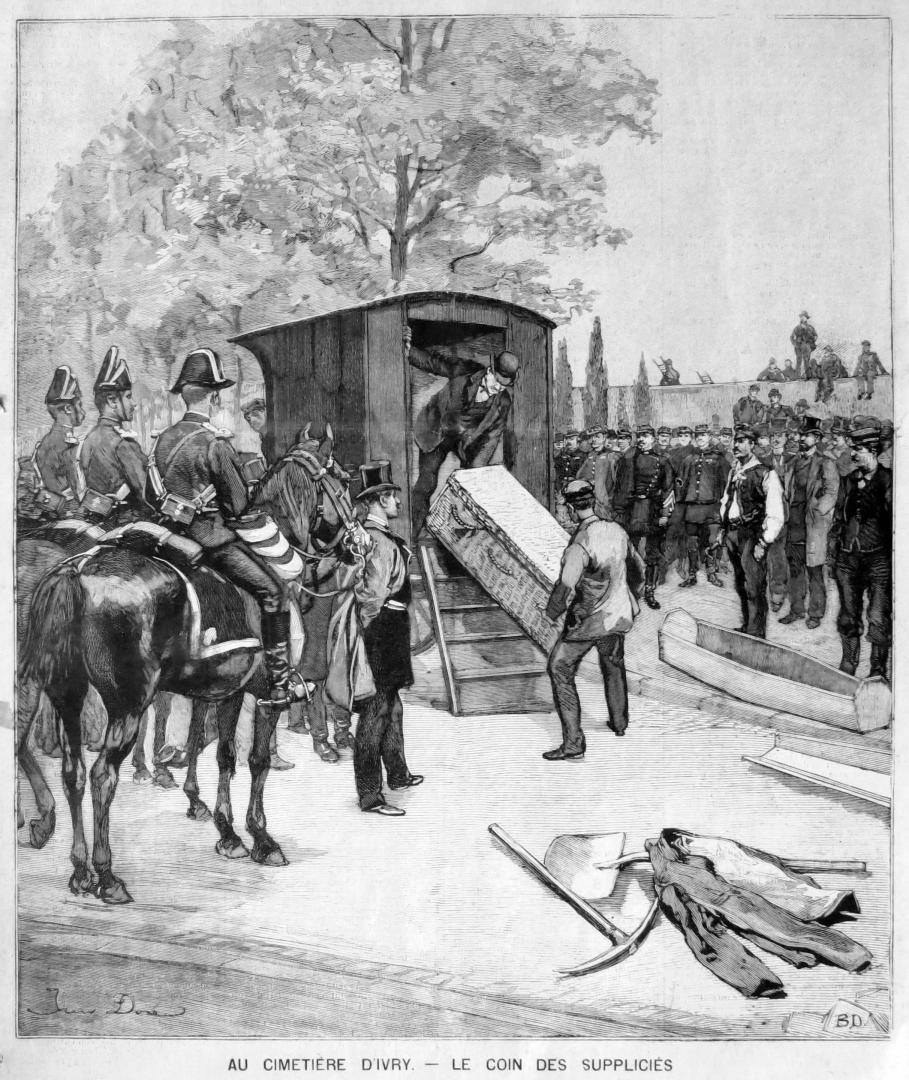
1836 - 1880
Victor Joseph Prévost
Summary
Name:
Nickname:
The Butcher of La Chapelle / The Handsome ManYears Active:
1867 - 1879Birth:
December 11, 1836Status:
ExecutedClass:
MurdererVictims:
2-4Method:
Bludgeoning / Decapitation / DismembermentDeath:
January 19, 1880Nationality:
France
1836 - 1880
Victor Joseph Prévost
Summary: Murderer
Name:
Victor Joseph PrévostNickname:
The Butcher of La Chapelle / The Handsome ManStatus:
ExecutedVictims:
2-4Method:
Bludgeoning / Decapitation / DismembermentNationality:
FranceBirth:
December 11, 1836Death:
January 19, 1880Years Active:
1867 - 1879Date Convicted:
December 8, 1879bio
Victor Joseph Prévost was born on 11 December 1836 in Mormant, in the Seine‑et‑Marne department of France, into humble beginnings—his father Pierre worked as a coachman, and his mother Barbe (née Griette) was unemployed. He was the youngest of three brothers, with Léon and Adolphe being about four and two years older, respectively. From infancy, Prévost suffered from bulimia, a condition he later claimed was inherited from his father.
At just 14, he was apprenticed to a trellis-maker on Rue Saint-Jacques in Paris. The conditions were brutal—he slept on a bare frame with no mattress and endured adult-level labor. Misunderstood and punished for his hunger, the boss slashed his food rations. In one desperate act, young Prévost stole a piece of bread—only to be mercilessly whipped (with a dog whip), a brutal mark on his youth. Later that day, while installing fence panels, he was accidentally impaled by a shard of glass that slashed his hands and face.
At the Jardin du Luxembourg, he once retrieved a stolen accordion from a boy bigger than him and returned it to its rightful owner. His strength was evident early on—he’d help cart carriers up the steep Rue de la Montagne‑Sainte‑Geneviève and once carried a heavy piece of meat on his head when a milkman knocked a boy to the ground and ran off.
There are varying accounts of how he began to butcher, but according to Ernest Raynaud, Prévost was mesmerized by the bloody dance of meat and knives in the shop and couldn’t resist slicing a shard of veal. Gustave Macé offers a more practical version—Prévost accidentally delivered diseased meat and was nearly arrested, prompting a job offer from the grateful butcher. Within a day, he switched apprenticeships and began training as a butcher, thriving in the shop’s atmosphere of wine, meat, and revelry. His appetite suited the job perfectly; he became skilled at skinning and deboning and took pleasure in handling flesh. His good looks and charisma drew attention—especially from the boss’s mistress and a servant—but this sparked jealousies that led to his dismissal. He then took work at a school on Rue Saint-Honoré, where he earned the nickname “The Handsome Man”.
Conscripted in April 1855, he joined the 4th Cuirassiers, later transferred to the 2nd Cuirassier Regiment of the Imperial Guard and participated in the Italian campaign, earning a commemorative medal. Demobilized at the end of 1861 with a good conduct certificate, he quickly reenlisted in 1862, and by 20 January 1866, was admitted to the elite cent-gardes.
He served with distinction until 14 April 1869, then pivoted to law enforcement. On 1 July 1869, he joined the Paris municipal police and, after a brief disruption due to political upheaval, became a peacekeeper on 8 November 1870, posted to Rue de l’Évangile in Paris’s La Chapelle neighborhood. Despite his disciplined military past, trouble trailed him: reprimanded in September 1871 for negligence, docked pay in September 1876 for shirking duty at a wine shop, though he also received commendation in April 1876 for saving someone from a runaway horse.
murder story
His first confirmed victim was his mistress, Adèle Blondin, a former governess who inherited 30,000 francs and earned about 1,500 francs annually from annuities. On Sunday, 27 February 1876, she visited Prévost at his residence at 22 Rue de l’Évangile, dressed in her finery and a Scottish shawl. When she went missing, suspicions pointed back to him. Investigators found her shawl and other belongings in his apartment. Initially, he claimed she’d left it as a gift, but against mounting evidence and blood found in his home, he admitted to strangling and dismembering her body, disposing of the remains in nearby sewers, and burying her head in the fortifications near the “grand office.” He also confessed that he sold or gave away her jewelry, insisting she only had about 1,500 francs on her. He even led authorities to dig up what remained of her skull later that day.

On 10 September 1879 at around 8 PM, a local woman named Madame Thiéry noticed a man (wearing a cattle driver’s coat and silk cap) leaning over a stream in her quiet district. Curious, she followed and later discovered a bundle of freshly cut meat stuck in a manhole. A peacekeeper, Hardy, was summoned, and they brought it to the station. A butcher and pharmacist realized the fragments were human. A search followed, uncovering 77 more pieces around the city—some were intercepted from a ragpicker. The pieces were sent to the morgue and painstakingly reassembled, except for the missing head, which was presumably scavenged by someone.
Madame Thiéry reported that the suspect matched the local peacekeeper known as “The Handsome Man,” whom she recognized from the neighborhood. Commissioner Lefébure both denied and contradicted Prévost, who denied knowing the area and invented an alibi before buckling. Eventually, he admitted he had the victim, Alexandre Lenoble, in his apartment on Rue Riquet, knocked him out, killed him with blows, stripped and dismembered the body, and disposed of flesh in sewers and ditches while keeping the head and jewelry at home. He claimed to have had dinner and gone to bed after — resuming the head dismemberment the next morning.
Lenoble was a 38-year-old jewelry broker with a wife and two kids. The butcher’s knife used in his dismemberment is now exhibited in the Paris police museum.
After this second crime, rumors swirled that Prévost was tied to other disappearances, but nothing was proven. He authored a repentance statement, denying additional guilt but indicating remorse for the confirmed murders.
Prévost was tried on 7 December 1879 before the cour d’assises de la Seine. Stoic and unemotional, he heard the indictment, answered questions, and witnessed the jury convict him after just 20 minutes—with the inevitable death sentence.
On 19 January 1880, he was executed by guillotine at La Roquette Prison in freezing -5 °C conditions. The public witnessed the execution amid swirling snow, and Prévost’s body was then used for macabre scientific studies. His remains and skull were dissected and stimulated with electricity in front of students; his brain became the subject of a study by Professor Paul Broca.
